MisterSandals
Participation Medalist
In your last pic, you have Boost Time set to 10 minutes. Its doing what its told do.Once it hits 14 it just basically stays on Boost (for more than 10 minutes).
In your last pic, you have Boost Time set to 10 minutes. Its doing what its told do.Once it hits 14 it just basically stays on Boost (for more than 10 minutes).
But it seems to be on Boost for more than 10 minutes, I don't think I've seen float. but maybe I'll just check it more carefully next time.In your last pic, you have Boost Time set to 10 minutes. Its doing what its told do.
I'd think of it as being in an absorb kind of mode as long as its at 14.0V and this puts a good full charge on it. If it gets to 14.1V or it stays on longer than 15-30 minutes, then i'd be a little concerned.Once it hits 14 it just basically stays on Boost
Should it not be at float at this point?

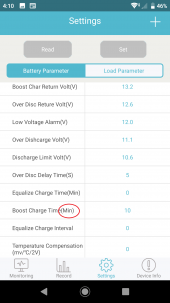
Interesting. Thanks for the update. I’ll have to check this on mine. I haven’t touched the settings in over a year but thought I timed it all out back then.hmm I think I found the problem; are the units in boost time minutes or hrs? there is a discrepancy in the app vs the Rover manual. Please see below. It seems to be consistent to being in hrs because because it stays in boost for hrs for me. let me try changing it to 1 hr of boost (or 60 min), as that seems to be the minimum??
@Bob142 have you actually timed your boost mode on your Rover?
View attachment 64389
View attachment 64390

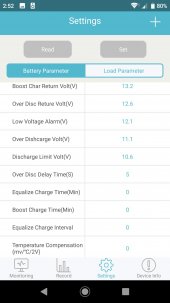
I’ll try it out again tomorrow, sun permitting, and see what I get.IT would be great if you can look at this for us.
My BT-1 display is different then yours, every things white, I wonder if they up dated appearance? I just bought mine a month or so ago. BummerAs @MisterSandals pointed out, the Equalization voltage matters less than setting the time to zero so that it doesn't equalize. I set it to 14V as a hedge against the SCC doing something unexpected and not adhering to the zero time setting.
I use the BT-1 Bluetooth module and the Renogy app to set mine up. I've never tried to get to all of the settings via the front panel of the unit so I'm not sure if they are all available (I can check that out a little later this afternoon). I've also noticed that terminology between the manual snippet, what you see on the front panel, and what I see in the app are inconsistent. So this might take a few tries for us.
Here's what I have for settings via the app:
View attachment 63984View attachment 63985
Nah, it’s just my phone set to dark mode.My BT-1 display is different then yours, every things white, I wonder if they up dated appearance? I just bought mine a month or so ago. Bummer
I wonder why you have Battery Rated AH(AH) between system voltage and battery type. Mine doesn't. hmm. I wonder if it madders?Sorry, Bob142, I got the posts mixed up. I'm using your profile for my Renogy 100 amp Smart lithium battery with self-heater (built-in heater). I live in colder climate. This new changes, shouldn't really affect that. So boost is ok for 10 minutes? I cant change it (if it needs to be).
Just to confirm, are these setting ok for my battery? Last thing I want to do is destroy my $950 battery lol!
View attachment 64004 View attachment 64005
@SolarShed, I finally got some time to do the test. Running it now. I'll provide an update later today.IT would be great if you can look at this for us.
I did some investigating, it seems to be minutes not hrs. because it would not accept a number below 10 as it kept changing it to 10 if I did. So, having said that, when I changed the time to 60 minutes (which it accepted), which supposedly is the minimum that the chart says, it still was in boost after 60 minutes.
Here's the interesting part is that it seems to be acting as float despite that it says boost, because the voltage never went past 14.0 and the current (according to the smart battery BMS), was 0.00 A.
There must be something that is overwritten with this setup.
After discovering that 60 minutes did not solve the boost situation, I starting looking into floating Lithium batteries in general. And I've learned its definitely not good to do this when the battery is full (which we are not doing) but, its also not required because there is no self-discharge of the Li batteries (or very little of it), so, hence that is why float is not required.
So thinking about this, if my battery hits 14 V and stays there, it won't drop to the boost return voltage anytime soon (unless I use the battery of course).
I tried this charging profile, which is basically the standard lithium LFP profile from Renogy, but trimmed the top end a bit. This does the same thing, hits 14V stays there, no current to battery and stays its in boost. Its like my controller is there in MPPT charge mode or boost. I think its doing what it should be doing? Does this make any sense?
View attachment 64495 View attachment 64497

Well well well. I'm seeing some shockingly bad behavior. I'm really glad you shared your experience because it is NOT doing what I thought it was!@Bob142 Great! look forward to hearing from you.
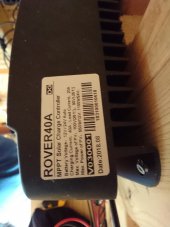

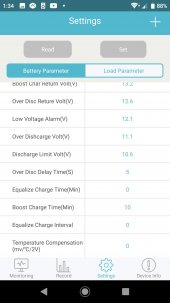
Here’s my Rover info:This is disappointing, and I cursed a little upon reading your post. I really don't know what is going on here.
I haven't seen a high-voltage disconnect, but then again, I haven't really been monitoring it 24/7. For me, it just seems to be either in boost or MPPT charge mode (or charge not ready in the night). This behavior is the same even with Renogy's default lithium settings (i.e. either its in boost for MPPT charge mode). Setting a boost time to x minutes and a (lower) float voltage, neither of these parameters are met, and you've confirmed that.
What date/lot number rover to do you have? I think that V030001 could be firmware? This is mine (sorry its sideways):
View attachment 65706
Since your finding, I've changed the float back to what boost and equalize are:
View attachment 65708 View attachment 65710
This profile above is basically Renogy's suggest Li (LFP) profile, BUT I trimmed the top end a bit...and I now may further modify a bit by changing the high-voltage disconnect to 14.6 V (default is 16.0V).
Just curious, can you rule out your batteries, could be fishy with unstable voltage?
EDIT: I should also mention that my history in the BT app, shows only min of 13.1 volts and max of 14.0 volts in the time period that I've changed the charging profile. If that is true and accurate, than I can say I don't think I've hit the High voltage disconnect. You may wish to check your history too, to confirm how long this has been happening.
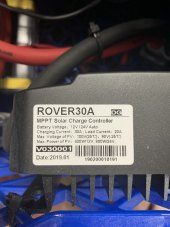
I thought about this some more last night. When I get some time (probably early next week) I'm going to run a test using Gel mode (boost of 14.2V). The boost duration is too long for my liking (2 hours) and the float is too high to be useful (13.8V) but I'd like to see if this unit ever gets into float mode. I've got a spare Lion Energy UT1200 that I was trying to sell, so I'm willing to let it take that beating to further our investigation.thanks, Bob i'll keep an eye out for mine and report any funny business here.
Another Rover user I spoke to, reported that using the default Li (LFP) profile, he experiences the same: its either in boost or MPPT when in the sun. No mention specifically about over charging or mis-charging. Sometimes these Rover's need a restart/reset.
Hopefully you find the solution to this and hope its trivial.


